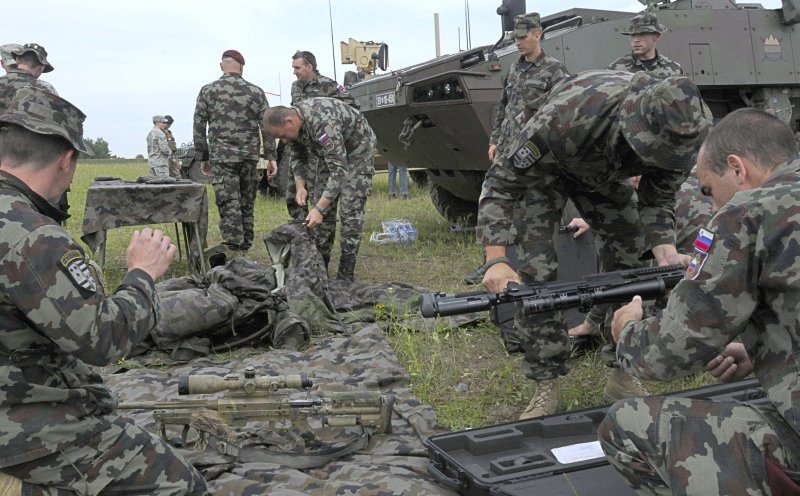Allied Strike 2011, the largest joint terminal attack controller and close-air-support exercise in Europe, kicked off here this morning with an opening ceremony which included three airmen jumping out of a C-130J Super Hercules and a welcome address by the commander of the 4th Air Support Operations Group, the unit sponsoring the exercise.
“Everybody who is sitting here in a uniform, you have to share your experiences with us,” Col. Nick Vite told the exercise participants during the ceremony. “You’re the teacher as much as you are the student, and don’t forget that. This exercise is really dependent on what you bring to the fight, as well as what we bring to the fight.”
Approximately 350 people from 15 NATO nations are participating in the exercise, which is designed to provide realistic training in all aspects of tactical air control and CAS. Several training lanes are geared specifically toward JTACs, while other lanes provide training for non-JTACs.
“We simply cannot do this type of training without our support personnel,” said Lt. Col. Jon Berry, the exercise director and commander of the 4th Air Support Operations Squadron. “The fact is that they are just as likely, if not more likely, than operators, at times, to be selected to do things such as convoy operations. We are absolutely adamant that our support side personnel are comfortable with their weapons and equipment, and that they have the time to gain currency and proficiency with these things.”
One example of training geared toward support personnel is the emergency CAS lane. In the scenario, a JTAC has been incapacitated and participants must determine which of his radios communicates with the tactical operations center and which communicates with the aircraft overhead. He or she must then effectively describe the enemy’s position to a pilot, using landmarks and units of measure.
Personnel from NATO partner nations are not only participating in the training, but in some cases, they are leading it. In fact, two of the eight primary training lanes are led by the U.S.’s partner nations, including the urban lane, which is run by Danish service members, and the combat outpost defense lane, which is run by Belgian service members.
First Lieutenant Bart Vantomme is the Belgian JTAC instructor running the COP defense lane, which requires JTACs to call in CAS to defend a base which is under attack by insurgents. Lieutenant Vantomme designed the scenario himself, which he said is based on a personal experience he had in Kunduz Province, Afghanistan, in 2009.
In addition to realistic scenarios, a measure of realism is added by the use of “close combat mission capability kit” simulation rounds. These CCMCK rounds are low-velocity marking rounds fired from specially modified M4 and M16 rifles. The rounds fire a wax-based dye which visibly marks targets that have been hit.
Every day, NATO partners fight beside their U.S. counterparts in conflicts such as in Afghanistan, which makes it critical to train together, Colonel Berry said.
“In order to be successful, we need to train like we fight, and we are absolutely committed to doing just that,” he said.










